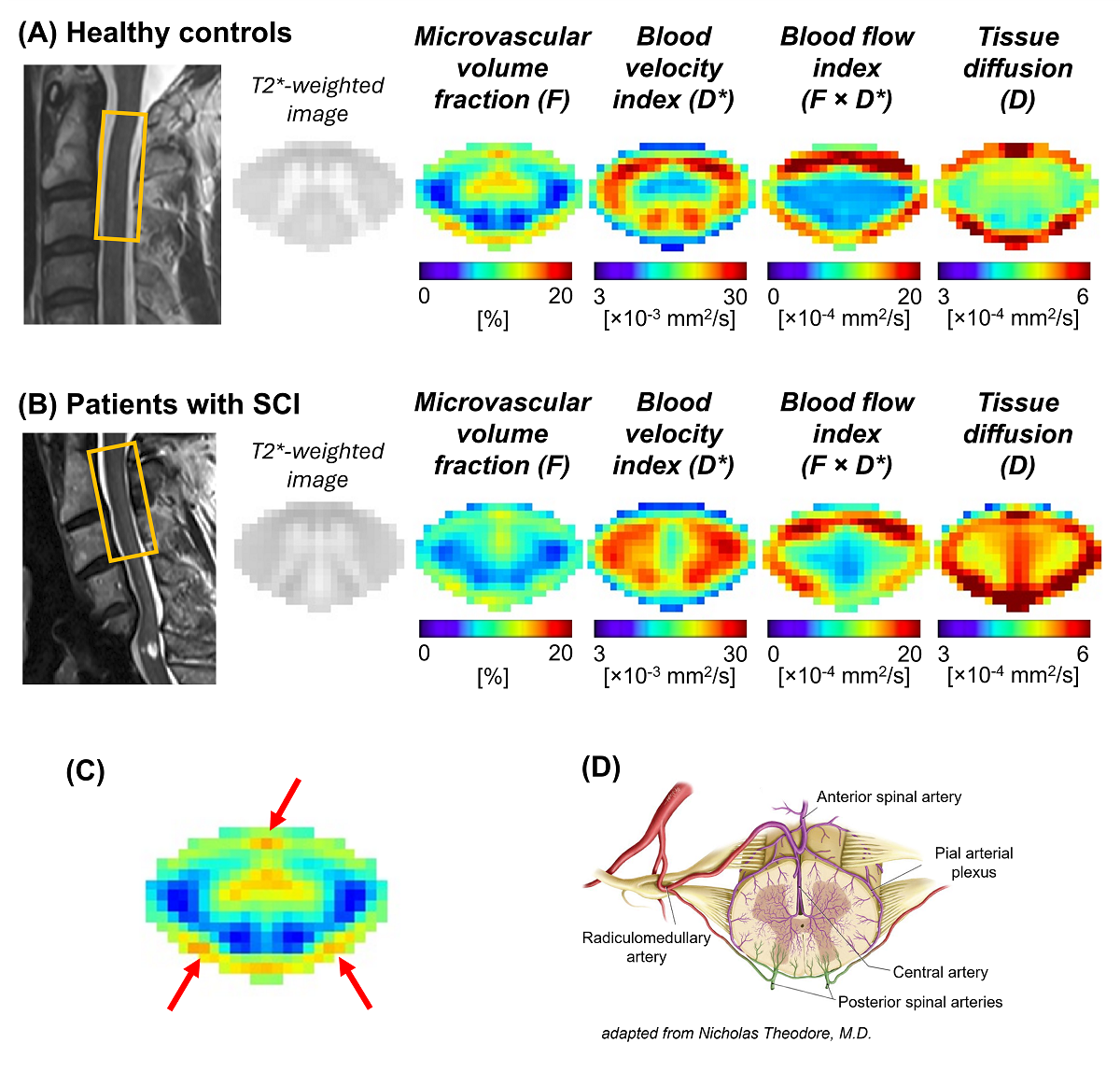Research in Paraplegiology
Advanced MRI Investigation in Spinal Cord Injury
Spinal cord injury (SCI) leads to disruptions in functional, microstructural, and vasculature integrity of the spinal cord both at and remote from the lesion. The underlying mechanisms of these changes remain poorly understood and there is no cure for SCI. Our research aims to comprehend SCI-induced impairments, utilizing advanced high and ultra-high-resolution MRI techniques. By investigating both microstructural and functional transformations in the brain and spinal cord, alongside intramedullary vascular impairments, we aim to demonstrate the efficacy of MRI in capturing degenerative processes after SCI.
Moreover, the utility of MRI methods for the assessment of the effect of anti-Nogo-A has already been validated in various clinical trials, including the NISCI trial. Our future investigations will center on developing and utilizing advanced structural and functional MRI methods for the characterization of SCIinduced changes, following traumatic injury. This enables us to explore the temporal dynamics of injury-induced changes with a high level of accuracy and reliability in a clinically feasible frame. It should be noted that this approach will shed light on the intricate processes of progressive microstructural and vascular reorganization during both acute and chronic SCI. Ultimately this will be able to provide standard neuroimaging biomarkers in therapeutic strategies targeting microstructural, functional, and vasculature changes after SCI.
Fortschrittliche MRT-Untersuchung bei Rückensmarksverletzung (SCI)
Eine Rückenmarksverletzung (SCI) stört die Integrität von Mikrostruktur und Mikrogefässen. Die diesen Veränderungen zugrunde liegenden Mechanismen stellen erheblich Herausforderungen dar, und es gibt keine Heilung für SCI. Unsere Forschung nutzt fortschrittliche MRT-Techniken, um die Beeinträchtigungen zu verstehen, die sich von der Verletzungsstelle bis hin zu abgelegenen Gebieten erstrecken. Durch Untersuchung makro- und mikrostruktureller Veränderungen sowie mikrovaskulärer Beeinträchtigungen wollen wir MRT-Parameter als zuverlässige Indikatoren für degenerative Prozesse im Rückenmark und im Gehirn nach einer SCI nutzen. Unsere Ergebnisse könnten als Biomarker für Interventionen dienen, unterstützt durch Studien wie NISCI. Zukünftige Studien werden Ultrahochfeld-MRT nutzen, um zeitliche Dynamik zu untersuchen und Aufschluss über die fortschreitende Reorganisation während akuter und subakuter Phasen einer SCI zu geben.
At a Glance
Advanced MRI Investigation in SCI 40
Key Collaborators
Project lead: Prof. Dr. med. Patrick Freund
PD Dr. Maryam Seif
Departments and Partners
Balgrist University Hospital: Spinal Cord Injury Center
University Spine Center Zurich
Clinical Relevance
To provide biomarkers in therapeutic strategies targeting microstructural and microvasculature changes after SCI

